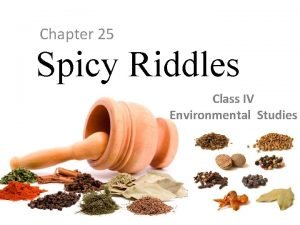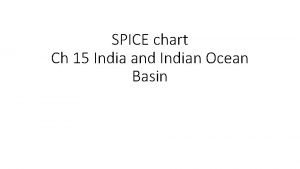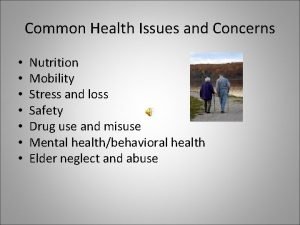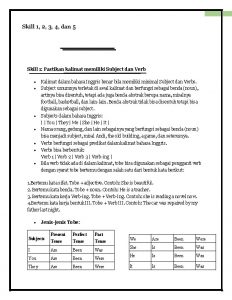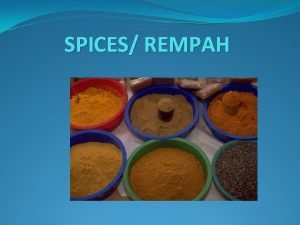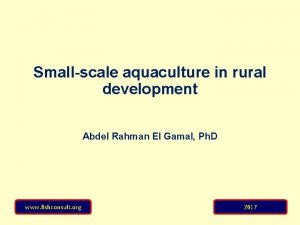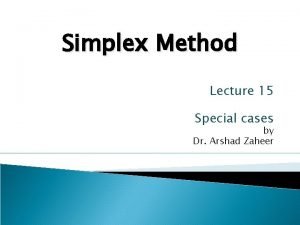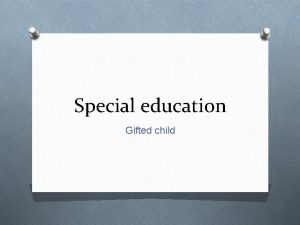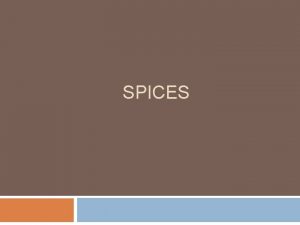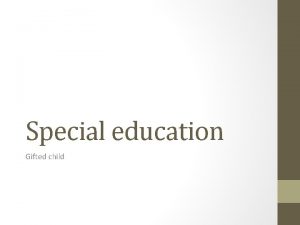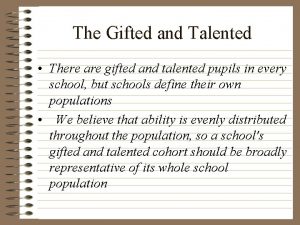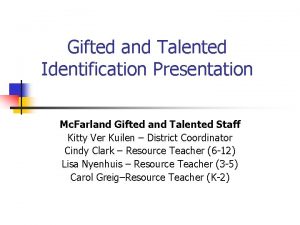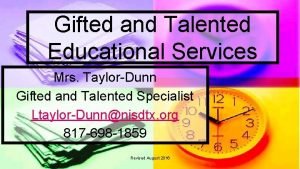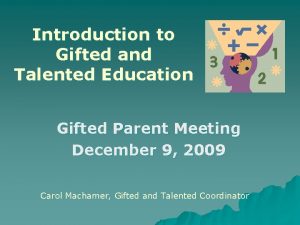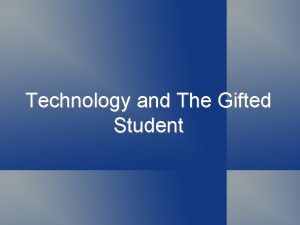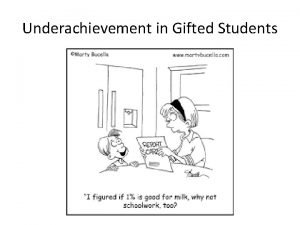Special Spices GIEPs Gifted Programming GIEPs and Gifted


















- Slides: 18

Special Spices: GIEPs & Gifted Programming GIEPs and Gifted Programming

Reading and Understanding the GIEP (The Salt) • Present Levels of Educational Performance (including testing and data) • Goals • Services

Present Levels of Educational Performance • snapshot of the student’s performance • helps to inform our decisions about goals and support services needed • Includes current information and historical data • Some districts include the initial psychological testing results in Section A because it helps to understand the starting point of ability and achievement, particularly if we suspect that we have an underachieving gifted student

Present Levels of Educational Performance • The next part of the PLEP, Section B outlines current scores from benchmark and achievement testing data. At the elementary level, this includes pre-screening tools such as i. Ready scores and PSSA scores. • i. Ready can be a valuable tool for our gifted students because it offers outof-level testing for our advanced learners. This means that even if a student has mastered 5 th grade content in an area, they are able to show what they know on content in that subject area up through 8 th grade.

Present Levels of Educational Performance • While it is not a fool-proof system, it does help us to have more information about how high we can go in advancing the content for our highest-achieving students. When possible, include the percentile rank for PSSA scores. This gives an idea of where the student is performing based on student scores across the state, and can be used to argue subject-specific acceleration decisions.

Present Levels of Educational Performance At the high school level: • Keystone • PSSA • PSAT/SAT, ACT and subject tests. • PVAAS projection scores • Class Rank and GPA

Progress on Goals • An anecdotal review of student success on prior year’s goals. Data can be qualitative or quantitative, and include specific experiences provided. • It should also include information from a student survey or interview with the teacher reflective in nature, and projective for future goals.

Grades and Teacher Input • Current snapshot of classroom grades • Narrative performance information from classroom teachers • Accommodations or alternative assignment data which will help to shape future goals

Other… • A place for everything else. • sensory processing disorders, physical or mobility issues that doesn’t impact their academics, but could create additional pressure or strain if not accommodated (students with a vision or fine motor issue). • The GIEP is a strength-based document so accommodations like you would see in an IEP do not appear in a GIEP under SDI or support services.

Goals and Objectives • Specific to student • Measurable • Tied to an area of strength • Sometimes it’s untested, and needs a narrative. (Sports, Music)

Specially Designed Instruction • WHAT does the classroom teacher need to do to help the student achieve the goals and objectives? • • • Pretesting with a threshold goal Alternative Assignments Conferencing Technology, Access to Mentor, Job Shadow? Most Difficult First Learning Contracts

Specially Designed Instruction • HOW does the classroom grade the student on what he or she accomplishes? • Pretesting + credit for advanced work? • Summative Assignments Only?

Support Services • Creative and flexible scheduling to meet the student’s unique • • learning needs. Acceleration Compacted learning Reduced seat time Communication between case manager and classroom teacher to assess ongoing needs

Gifted Programs (The Pepper!)

Pull-out Services • Often viewed as an elitist reward • Rarely viewed as valuable by anyone not directly involved

Pull-out Services • Like-ability students in small or grade-level groupings • Often for “soft-skills” goals

Pull-out Services • Mini-conferences and Speakers • Special Projects or PBL • Competitions (National History Day, Future City, Grammar Bowl, etc. ) • 3 Step Math

• Susan. Heydt@gmail. com
 Difference between condiments and spices
Difference between condiments and spices Market forms of poultry
Market forms of poultry What are herbs used for
What are herbs used for What is the difference between a herb and a spice
What is the difference between a herb and a spice Spice riddle
Spice riddle India spice chart
India spice chart Fulmer spices
Fulmer spices Jules janick
Jules janick The spices flavoring the meal were quite distinctive
The spices flavoring the meal were quite distinctive Spices adalah
Spices adalah Conclusion of rural development
Conclusion of rural development Chapter 14 section 1 the search for spices
Chapter 14 section 1 the search for spices Special cases in simplex method pdf
Special cases in simplex method pdf Qm for windows
Qm for windows Perbedaan linear programming dan integer programming
Perbedaan linear programming dan integer programming Greedy algorithm vs dynamic programming
Greedy algorithm vs dynamic programming What is system programing
What is system programing Linear vs integer programming
Linear vs integer programming Definisi linear
Definisi linear




